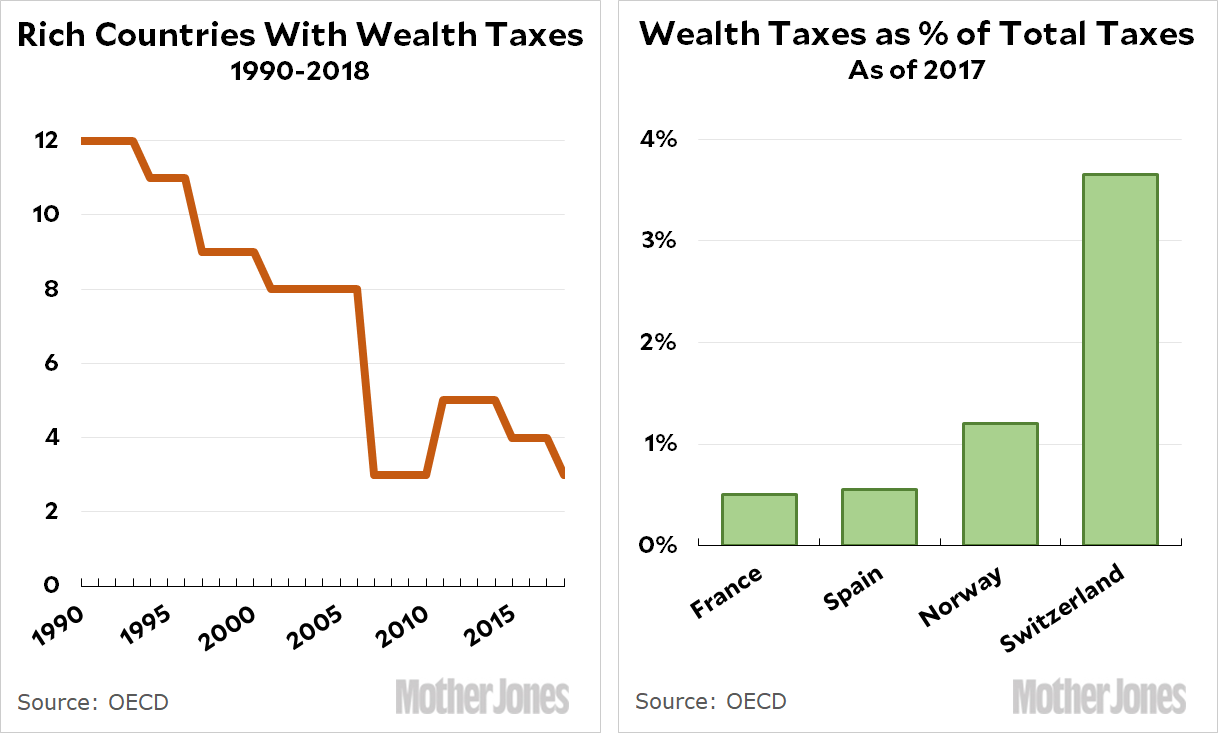For those curious to learn more about wealth taxes, Brad DeLong recommends a primer written a few months ago over at Equitable Growth. It’s a good introduction, but in the end the most important takeaway is probably this:

Most countries have given up on wealth taxes because the game wasn’t worth the candle. There are lots of intricacies to a wealth tax, and in the end it amounted to only about 1 percent of total tax revenues in most countries (with Switzerland as a bit of an outlier). In the United States, total tax receipts for all levels of government come to roughly $5 trillion, so 1 percent would amount to $50 billion per year.
In round numbers, you could get the same amount of revenue by creating a new tax bracket at $1 million and increasing the top tax rate from 39 percent to 42 percent. There may be advantages to a wealth tax even if it raises the same amount as a millionaire-bracket income tax, but on the other hand the increased income tax is very simple, very well-understood, hits pretty much the same people, and is unquestionably constitutional. Given all that, a wealth tax would probably need to have some pretty convincing benefits to be worth the effort of creating it.

















